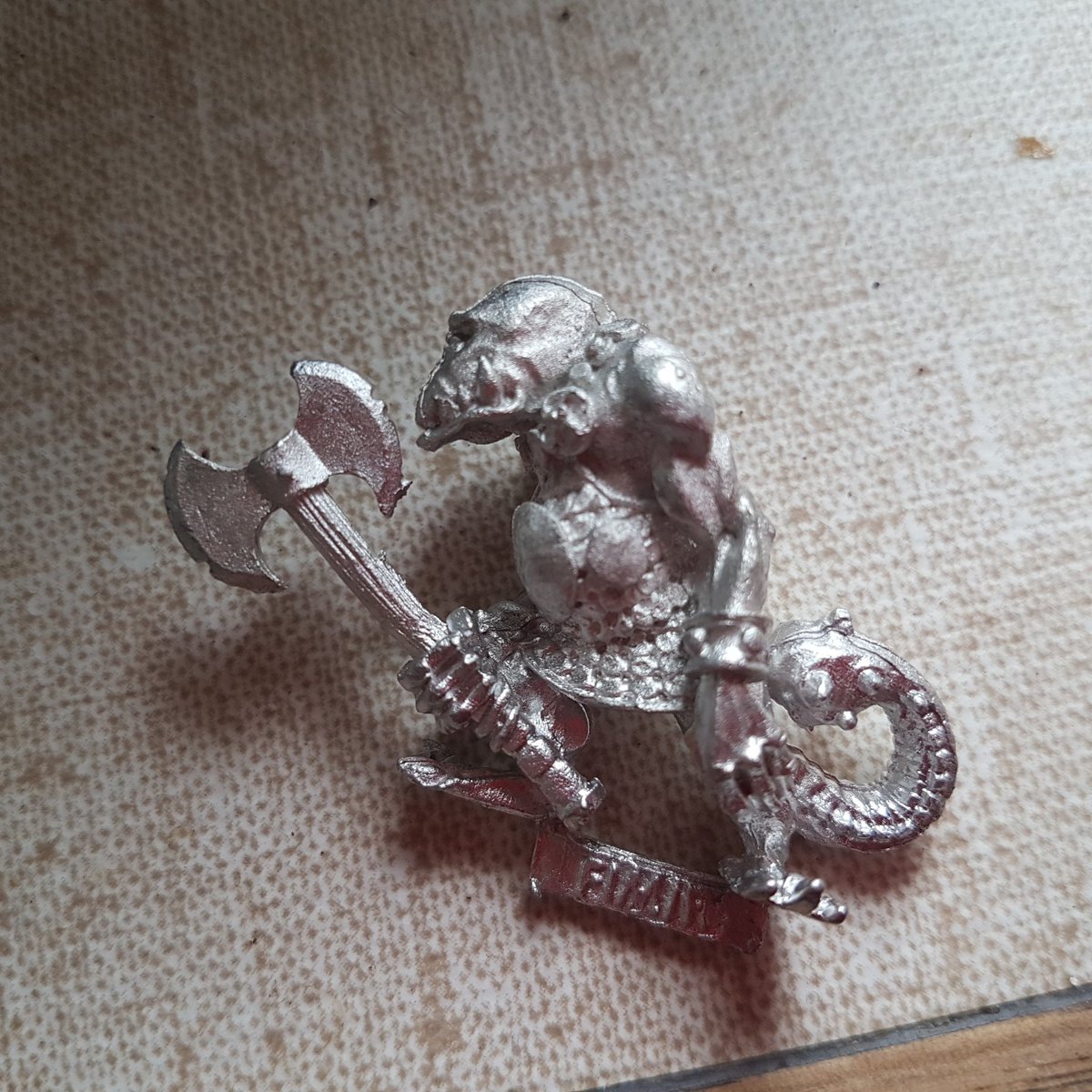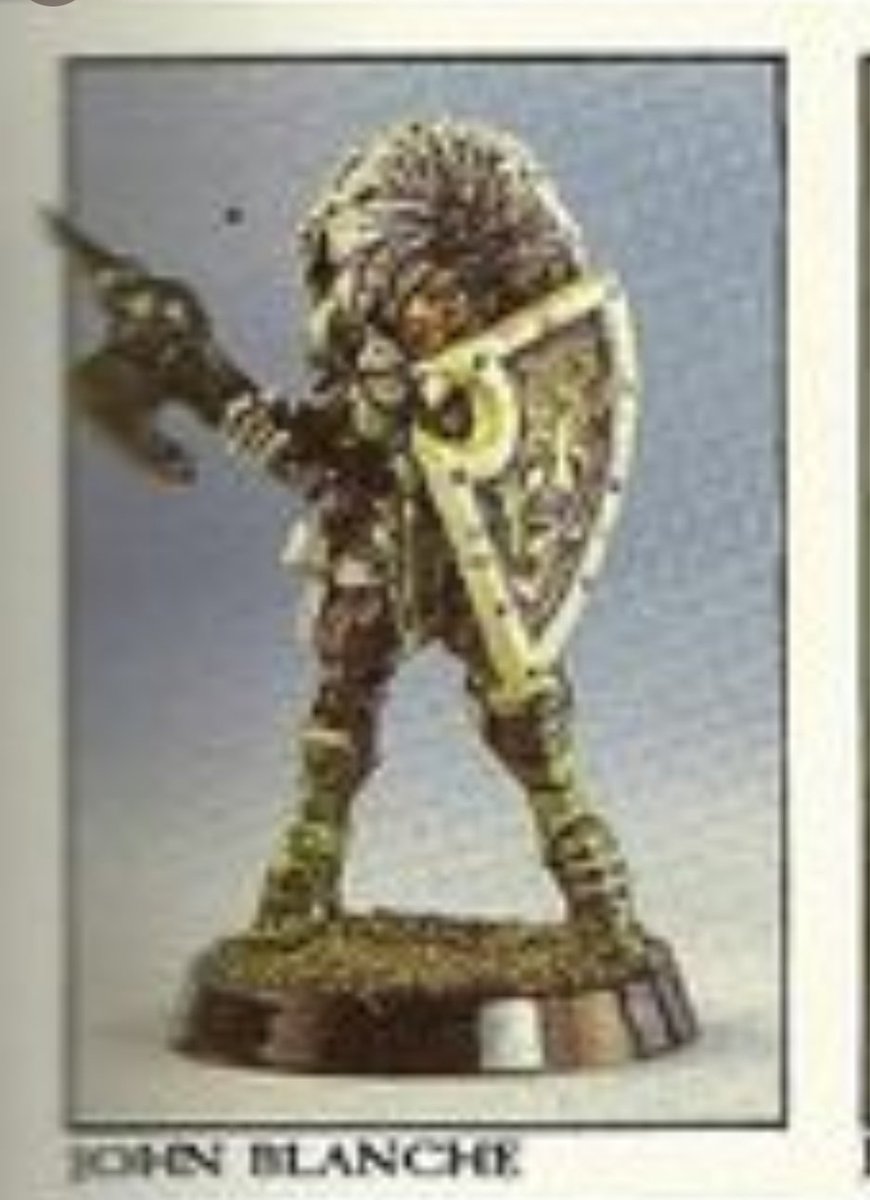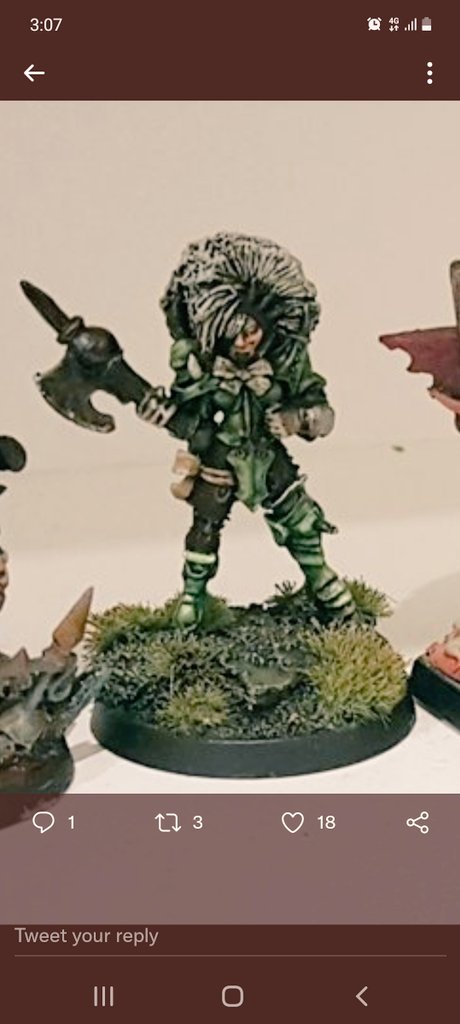#warhammer in the 80s was waiting a month for White Dwarf to arrive at the news agent just so you could flip through for the two to four full colour pages of 'eavy metal pages and if you where lucky a few pages of color mini adverts. 



See, the problem was by the time the minis were in White Dwarf, many were already out of production, were unlikely to be in the one game store within travel distance and mail order involved postal orders and order forms. 

For example, these two models where part of a limited release scenario pack. So even though I got to see the minis, I had no way of getting them. 

Here is an example of the color adverts for minis. These command groups actually have three or four variants of each model, and they would come randomly assorted so you had to spend a while digging through racks to get the cool ones. 

Collecting a full page of minis from the 80s can be a real challenge. This range, for example, can sell on ebay for between 15 and 45 australian dollars each. 

Yeaaah those days are long gone. I have been collecting the minis from my first White Dwarf issue for yeaaaars. This little chap is my take on the mercenary simkin (2nd row) 





Hope you enjoyed the history lesson. X
• • •
Missing some Tweet in this thread? You can try to
force a refresh











